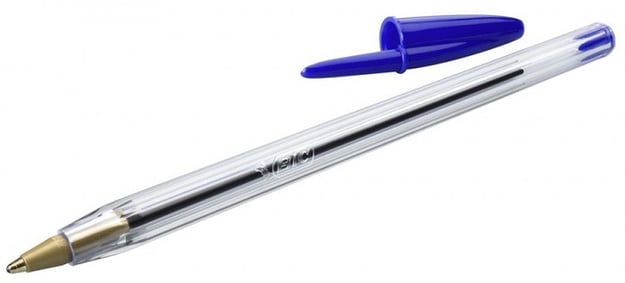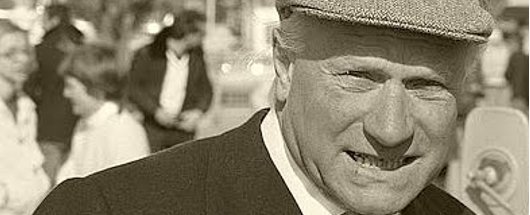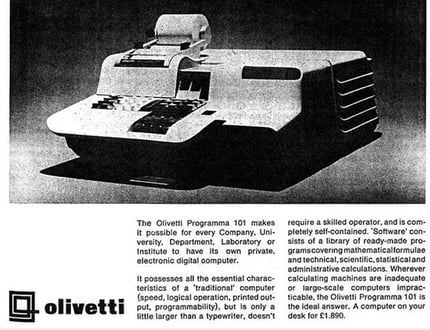What is the key to a product’s success? Is it inventive ability? Or is it definition, commercialization and launch? What is more important: R&D or product management?
In our line of posts dedicated to legendary products, we are going to make a bit of a counterpoint with our previous post. In it, we addressed the tenacity of a reduced team of engineers at Olivetti in creating what could be considered as the first personal computer, despite the lack of support from their own company and without any help from Marketing or a market study. Today we will speak about how a product’s design and marketing vision can make a difference while using one same invention. Today’s topic is the Bic pen.

The invention
Outright stating who was the inventor of the pen is no easy task. It happens often: several people are simultaneously working on the same idea, each one with a different approach and often without knowing what the others are exactly doing. Well, that is precisely the case of the ballpoint pen.
The need to be met had been obvious for a while. Until the beginning of the 20th century, the only tool available for writing was the quill pen, which let the ink slide to the tip of a metal piece until landing on paper. At that time, quill pens were uncomfortable, dirty, they easily bled through the paper and required time to dry.
It is said that it was John Loud in 1888 who first added a rotating ball at the end of a quill pen to allow for a smooth administration of the ink. In his case, his intention was to mark patterns on leather but his prototype was not suitable for writing on paper. Many other inventors applied the idea of the ball to develop a writing tool, but with little success.
If we had to confer this invention to anyone, we should probably hand it to José Biró, an Argentinian‑nationalized Hungarian. Biró was a journalist and inventor who was frustrated by the difficulties his quill pen gave him when writing his articles, and set his mind to solving the problem. It is said that he became inspired by seeing a group of children play with marbles. When a marble rolled over a puddle, it drew a fine line on the ground. Biró intended to use that line to write smoothly.

The execution
Let us assume that it was Biró’s idea. In fact, Biró commercialized his first ballpoint pen with Meyne’s help: the Birome (Biró-Meyne), a name still used in some Latin American countries to refer to the ballpoint pen. However, his invention was highly criticized due to its rather rudimentary functioning.
Biró sold the rights to his invention in different countries. In Europe, the French Marcel Bich purchased them in 1945. This is where the true pen revolution begins.

Bich quickly made a series of decisions that time would later on prove to be key in his product’s success. The first one was that he gave up his own surname to give name to his product. Bich was too similar to bitch so he changed it for Bic, a resounding simple word. The second one was that he understood that Bic’s success relied on his product’s mass use, and mass use requires simplicity and low cost.
The famous Bic Cristal is a prodigy in many ways. Despite the fact that the first commercialized Bic pens cost back then 100 dollars, they soon dropped to 19 cents. For that, the pen was reduced to its minimal expression. The result: a simplicity and functionality prodigy.
The Bic Cristal’s industrial design is currently exhibited in the Museum of Modern Art in New York. Its hexagonal shape, inspired by wood pencils, allows the user to grasp it easily and at the same time prevents it from rolling off the table. Its ink is always loaded due to gravity and can be seen through a small plastic tube that allows you to see how much there is left. A small hole in the external barrel balances air pressure inside and outside. The ball was initially made out of steel, subsequently out of tungsten carbine, and allows for a smooth writing. And the cap, designed to be able to clip the pen to a flap or a notepad, has a small hole that prevents children from suffocating if the cap is inhaled.
And disposable
However, Bic’s key to success was without a doubt it being “disposable.” We went from refillable quill pens to ballpoint pens that were so extraordinarily cheap that one could use one and then throw it away. To us educated 21st century citizens, the Bic pen might seem like the origin of one of the evils of our time: the excessive amount of waste we generate and the impact this has on the environment. Nevertheless, from a purely marketable point of view, the idea was simply great.
In fact, it was so important that the company Bic set their minds to the idea of making other products disposable too. And they did come up with several successful ideas: today 11 million disposable bic razors and almost 4 million lighters are sold every day. Some other ideas were not as successful, though, such as their disposable panties.
The communication
Bic combined a great product with a good communication policy. Their advertising has always been consistent with their product: simple, direct and good quality. There was a particularly famous advertising spot in Spain during the 80s where they advertised their two pens: bic cristal and orange bic. Their spot had musicality, was clear, reiterated basic concepts and endlessly repeated the word “Bic”. Ideal to get you to remember a product that should always be in your desk.
[youtube]https://www.youtube.com/watch?v=hD-dgSuzkzU[/youtube]
Basically, what Bic did was democratize writing and make our lives easier thanks to a perfect product. There are currently around 20 million units sold every day, mounting up to over 100 billion ballpoint pens sold in all 5 continents since 1953. Logically, they got their reward: a business empire that has lasted through time.
Lessons to learn from this story
- The "idea" is not everything in a product’s success: execution and strategic vision are fundamental. The same great invention can create a successful or failed product.
- A strategic vision is key to exploiting a good product. Marcel Bich quickly identified which attributes were key to the success of the ballpoint pen and created a company around those attributes. In his own words, the secret to his success was staying true to his original idea: commercializing simple but quality products.
- Bic knew how to diversify their product based on the notion of “diversification.” They developed new products from different categories with one common denominator.
- Entry barriers: Bic still has an advantage with their pen’s production cost that allows them to hold a privileged position on the market. Combining a well‑designed, well‑produced product with very low costs guarantees enjoying from a long‑lasting advantage.
- Having a consistent communication with the product is crucial in order to meet implantation goals, especially in the case of a product where its success depends on its mass use.





